
In dentistry, even the slightest inaccuracy can affect the outcome of treatment and patient safety. That is why it is so important to have a clear view of the working area and high-definition visualization during clinical and surgical interventions. Optical magnification is critical when performing complex dental procedures - from restorations to endodontic treatment. Such procedures require maximum precision, which is difficult to achieve with the naked eye. Binocular loupes have become an important tool for the modern dentist, allowing to simultaneously improve the quality of work and reduce the physical strain on the doctor.
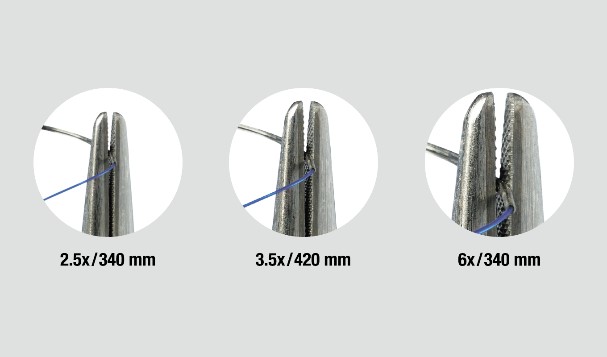
The most common magnification for dental practice is 2.5x, which provides a wide field of view and a large depth of field. This option is optimal for daily clinical tasks: preventive examinations, restorations, periodontal interventions and hygiene procedures.
With a magnification of 3.5x, it is comfortable to work when preparing restoration edges, installing veneers or microprosthetics. For endodontics, especially when working with root canals, 4.0x or even 6.0x are used - these levels provide maximum detail, but require experience, since with magnification both the working distance and the field of view decrease.
Practical confirmation of the effectiveness of different magnifications is provided by the experience of practicing surgeons. Thus, in an interview for the professional Australian magazine "Bite magazine", Dr. Han Choi, a maxillofacial surgeon and a member of the Dental Council of New Zealand, noted that loupes with a combination of different lighting configurations significantly improve visualization and control of the surgical field, especially when working with thin tissues. In his practice, loupes with 2.5x magnification turned out to be optimal when installing implants in the area of the entire jaw, where a wide field of view is required, while he uses loupes with 3.5x for complex procedures such as guided bone regeneration (GBR) or the application of small sutures. This allows for even greater precision in tissue manipulation. According to the doctor, the use of binoculars with integrated lighting has significantly affected the quality of his daily practice, and the system itself is comfortable, lightweight and helps increase confidence during interventions.
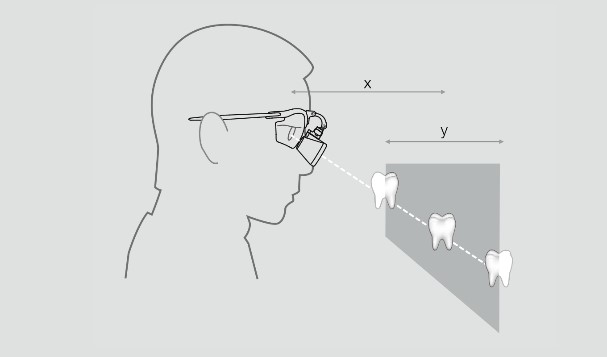
Choosing a binocular loupe is not only a question of magnification, but also the right balance between convenience of work, field of view and depth of field. This is especially important in dentistry, where precision and long-term concentration are crucial.
According to the magnification of 2.5x, three working distance options are usually used:
340 mm - optimal for sitting work, provides a compact focus area and reduced strain on the neck.
420 mm - convenient for standing work, allows you to maintain an ergonomic posture.
520 mm - used for a narrow purpose, for example, for surgical interventions or when it is necessary to work at an increased distance.
The higher the magnification, the shorter the working distance becomes, and the field of view and depth of focus narrow. This requires greater precision, experience and gaze fixation skills from the doctor.
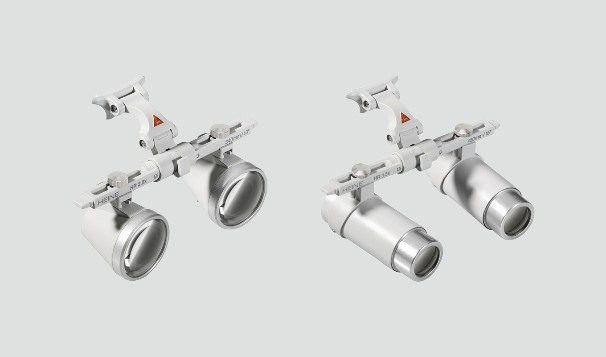
Premium binocular loupes are equipped with aspherical optics, which minimize optical distortion, provide high image clarity and uniform illumination across the entire field of view. This is especially important in dentistry, where accurate rendition of shape, color and texture is critical to the quality of treatment.
Image quality directly depends on the optical system. HEINE binocular loupes use advanced technologies to achieve maximum clarity without distortion:
HEINE HR — achromatic optics with high resolution, provides a clear, bright image without chromatic aberrations (rainbow effect).
HEINE HRP — prismatic optics, allowing you to achieve magnification from 3.5x and higher with maximum depth of field and detail, while maintaining correct color rendition.
Thanks to a special anti-reflective coating that reduces light reflection to 0.3%, HEINE loupes provide the brightest image among similar models, even at the edges of the field of view. This is especially important for long-term manipulations in hard-to-reach areas of the oral cavity, where even minor details are critical.
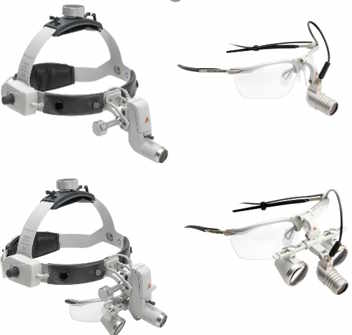
Lighting: Power, Flexibility, and Precision
The image in the loupes will not be effective without proper lighting. Dentists can choose from a variety of illuminators depending on the type of work and personal preferences:
Frame-mounted illuminators are compact, lightweight, and provide up to 50,000 lux of light. They provide coaxial illumination for everyday practice.
Hoop-mounted illuminators provide versatility of mounting and comfort during long-term work.
Headlamps on a helmet are the most powerful (up to 90,000 lux), with the ability to adjust the diameter of the light spot from 30 to 80 mm, which allows you to focus on both a large area and a point zone without losing brightness.
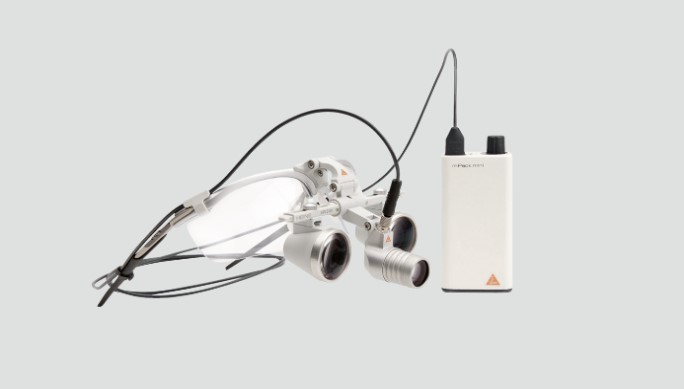
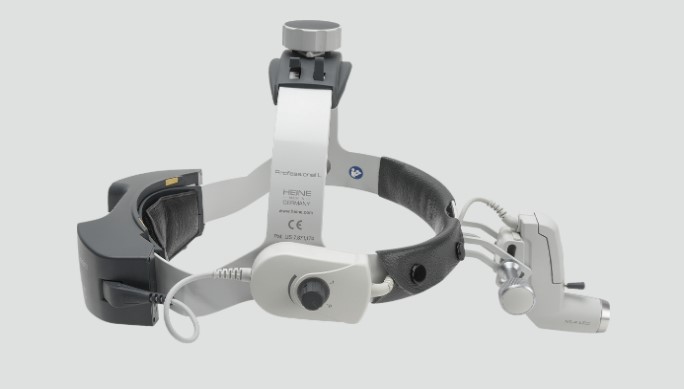
Heine Optotechnik battery options give the dentist the freedom to choose according to his or her working style:
mPack mini – the most compact belt-mounted battery, the lightest weight of all solutions, with up to 9 hours of battery life. Ideal for frame-mounted light configurations.
mPack – also belt-mounted, with up to 8.5 hours of battery life, ideal for headband or headband light configurations with a wired connection.
mPack UNPLUGGED – a wireless solution for mounting directly on the headband, with up to 3.5 hours of battery life, giving the dentist maximum freedom of movement and comfort during long procedures.
When mounted on the headband, the system has a balanced weight distribution, minimizing pressure on the neck and improving overall comfort. However, it should be taken into account that even with uniform weight distribution, for some users the weight of the battery on the helmet may remain noticeable, especially during long-term work. Therefore, the choice of configuration should be based on individual physical characteristics and the duration of the procedures.
Yellow filter - a useful accessory for dental practice
Special attention should be paid to the yellow filter, which can be added to the illuminator. It effectively blocks the blue spectrum of light, preventing premature hardening of composite materials during manipulations with composite materials that polymerize under the influence of the light flux.
Binocular loupes in combination with high-quality lighting and ergonomic accessories not only improve the accuracy and efficiency of dental procedures, but also significantly increase the comfort and safety of the doctor. In combination with aspherical, achromatic optics and innovative lighting, this is a modern quality standard in dentistry.